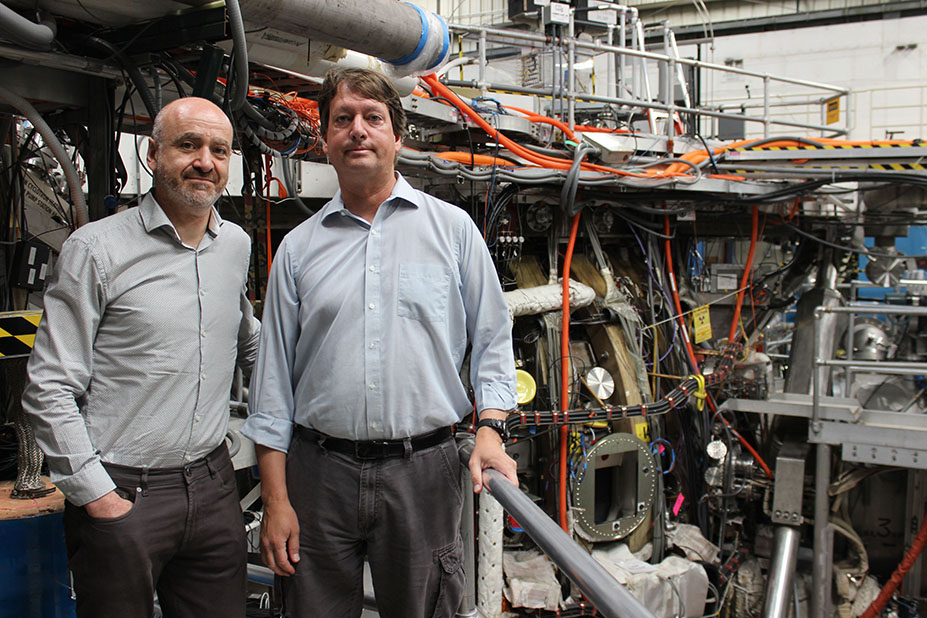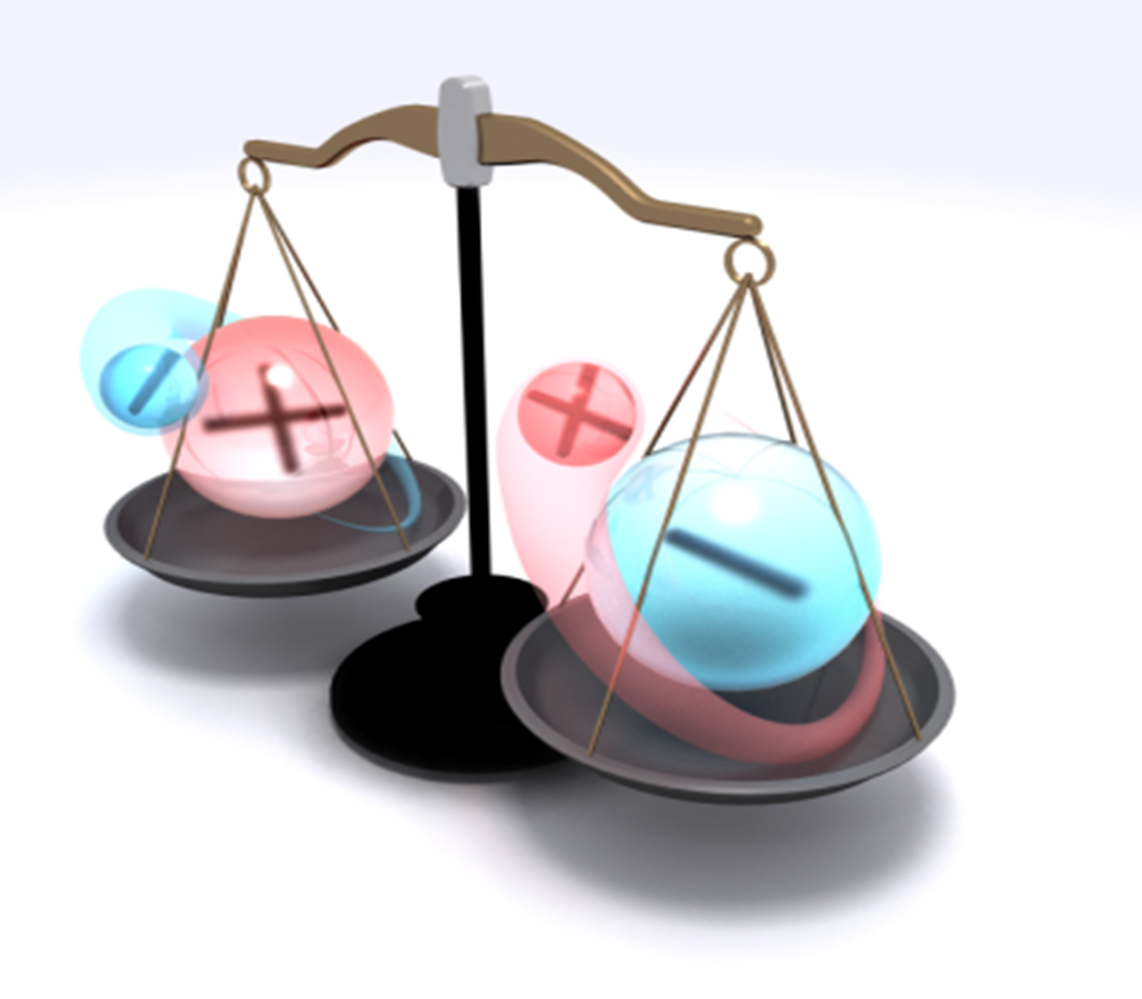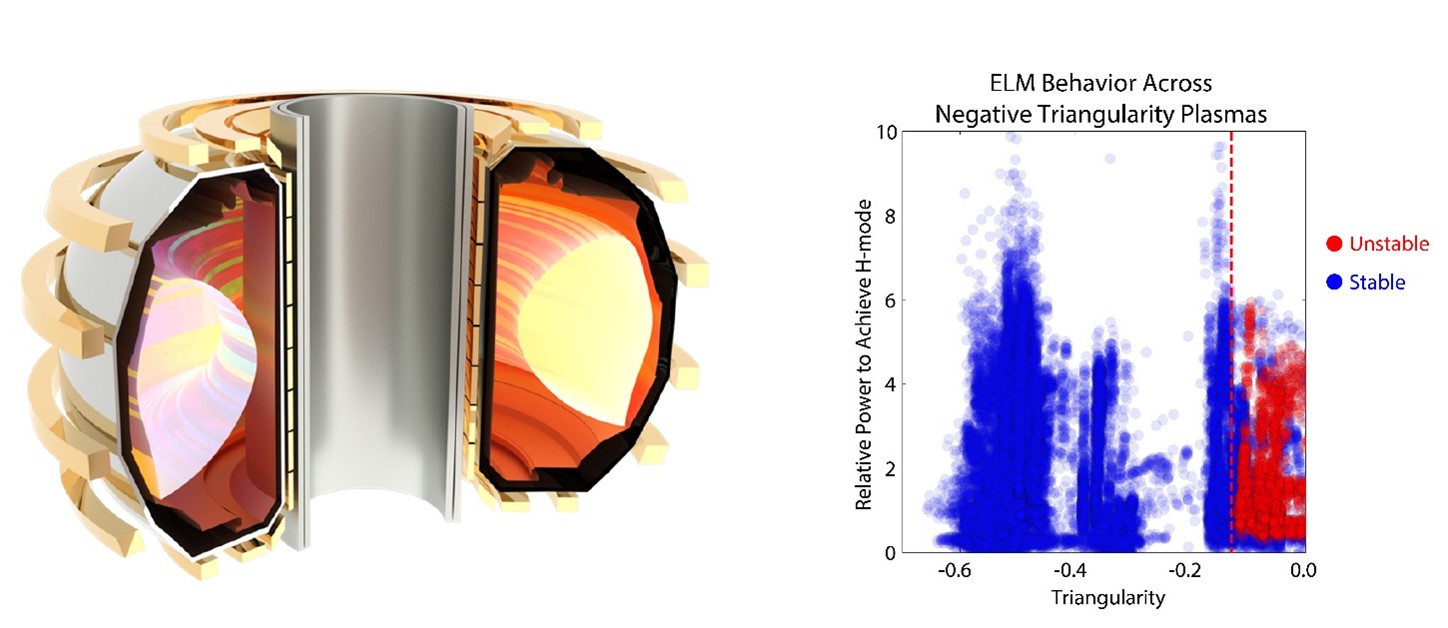Steady as She Goes
Scientists tame damaging edge instabilities in steady-state conditions required in a fusion reactor.

The Science
Fusion reactors need to run in a steady state. Also, they must reduce or eliminate intense bursts of heat and particles called edge localized modes (ELMs) that collide with the reactor’s walls. Researchers working on the DIII-D tokamak (a bagel-shaped structure that houses fusion reactions) have discovered that conditions required for steady-state operation are also highly beneficial for suppressing the ELMs. Applying 3-D magnetic fields from coils outside the plasma produces ripples in the edge of the plasma that are particularly effective in reducing the magnitude of the ELMs.
The Impact
The team’s work will help optimize fusion experiments. Soon, a team will delve into the synergy between steady-state conditions and ELM suppression. Specifically, DIII-D and Princeton Plasma Physics Laboratory (PPPL) researchers will work on an international effort at the KSTAR tokamak in South Korea.
Summary
Fusion reactors need to run in a steady state and must reduce or eliminate ELMs, intense bursts of heat and particles that collide with the walls of the reactor. Researchers on the DIII-D tokamak have discovered that conditions required for steady-state operation are also highly beneficial for suppressing the ELMs. Applying 3-D magnetic fields from coils placed outside the plasma produces ripples in the edge of the plasma that are particularly effective in reducing the magnitude of the ELMs. Making this effectiveness possible is high plasma pressure, produced by external heating, that enables the plasma to drive more of its own current in the plasma edge—an important factor required for achieving a steady-state fusion reactor. Higher pressure and current in the plasma edge produces more amplification of the external magnetic ripple. The higher the amplification the more effective is the applied magnetic ripple for suppressing the ELMs.
Measurements on the DIII-D tokamak confirm both the strong amplification of the external 3-D magnetic field and the weakening of the ELM bursts in these high edge pressure plasmas. Surprisingly, this method of ELM suppression is effective even at low levels of plasma rotation and for a wide range of plasma current suitable for steady-state reactors.
The discovery of a synergy between high-pressure steady-state plasma conditions and the amplification of the 3-D magnetic field for ELM suppression opens up new avenues for optimizing future tokamak experiments and steady-state tokamak reactors. Superconducting tokamaks in Asia, such as the Korea Superconducting Tokamak Advanced Research (KSTAR) device in South Korea, will soon be exploring this synergy in joint experiments with DIII-D and PPPL researchers.
Contact
Raffi Nazikian
Princeton Plasma Physics Laboratory
rnazikia@pppl.gov
Funding
This research was supported by the Department of Energy (DOE), Office of Science, Office of Fusion Energy Sciences, using the DIII-D National Fusion Facility, a DOE Office of Science user facility.
Publications
R. Nazikian, C.C. Petty, et al., “Grassy-ELM regime with edge resonant magnetic perturbations in fully noninductive plasmas in the DIII-D tokamak.” Nuclear Fusion 58, 106010 (2018). [DOI: 10.1088/1741-4326/aad20d]
C.C. Petty, R. Nazikian, et al., “Advances in the steady-state hybrid regime in DIII-D—a fully non-inductive, ELM-suppressed scenario for ITER.” Nuclear Fusion 57, 116057 (2017). [DOI: 10.1088/1741-4326/aa80a]
Related Links
Princeton Plasma Physics Laboratory press release: Steady as she goes: Scientists tame damaging plasma instabilities and pave the way for efficient fusion on Earth
Highlight Categories
Program: FES
Performer: University , DOE Laboratory , SC User Facilities , FES User Facilities , DIII-D



